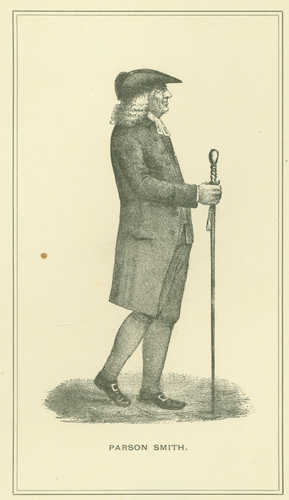Keywords: Congregational cemetery
Item 76323
Plan of Congregational Cemetery, Cumberland, 1935
Contributed by: Prince Memorial Library Date: 1835 Location: Cumberland Center Media: Ink on paper
Item 87964
Congregational Church, Waite, ca. 1930
Contributed by: Penobscot Marine Museum Date: circa 1930 Location: Waite; Talmadge Media: Glass Negative
Item 151769
Mt. Sinai Cemetery Association, Portland, 1969
Contributed by: Maine Historical Society Date: 1969 Location: Portland Client: Mt. Sinai Cemetery Association Architect: H.I. & E.C. Jordan, surveyors
Exhibit
Anshe Sfard, Portland's Early Chassidic Congregation
Chassidic Jews who came to Portland from Eastern Europe formed a congregation in the late 19th century and, in 1917, built a synagogue -- Anshe Sfard -- on Cumberland Avenue in Portland. By the early 1960s, the congregation was largely gone. The building was demolished in 1983.
Exhibit
Shaarey Tphiloh, Portland's Orthodox Synagogue
Shaarey Tphiloh was founded in 1904 by immigrants from Eastern Europe. While accommodating to American society, the Orthodox synagogue also has retained many of its traditions.
Site Page
Strong, a Mussul Unsquit village - Prominent Women
"May. Their father was the local Congregational pastor, and the importance of faith, decorum, and education was stressed."
Site Page
John Martin: Expert Observer - Interior plans, Third Parish Church, Bangor, 1865
"… John Towle of Boston, also was known as Central Congregational Church. The plans appear on page 631 of his Journal and the descriptions of each…"
Story
Reverend Thomas Smith of First Parish Portland
by Kristina Minister, Ph.D.
Pastor, Physician, Real Estate Speculator, and Agent for Wabanaki Genocide
Lesson Plan
Longfellow Studies: "The Jewish Cemetery at Newport"
Grade Level: 6-8, 9-12
Content Area: English Language Arts, Social Studies
Longfellow's poem "The Jewish Cemetery at Newport" opens up the issue of the earliest history of the Jews in America, and the significant roles they played as businessmen and later benefactors to the greater community. The history of the building itself is notable in terms of early American architecture, its having been designed, apparently gratis, by the most noted architect of the day. Furthermore, the poem traces the history of Newport as kind of a microcosm of New England commercial cities before the industrialization boom. For almost any age student the poem could be used to open up interest in local cemeteries, which are almost always a wealth of curiousities and history. Longfellow and his friends enjoyed exploring cemeteries, and today our little local cemeteries can be used to teach little local histories and parts of the big picture as well.
Henry Wadsworth Longfellow visited the Jewish cemetery in Newport, RI on July 9, 1852. His popular poem about the site, published two years later, was certainly a sympathetic portrayal of the place and its people. In addition to Victorian romantic musings about the "Hebrews in their graves," Longfellow includes in this poem references to the historic persecution of the Jews, as well as very specific references to their religious practices.
Since the cemetery and the nearby synagogue were restored and protected with an infusion of funding just a couple years after Longfellow's visit, and later a congregation again assembled, his gloomy predictions about the place proved false (never mind the conclusion of the poem, "And the dead nations never rise again!"). Nevertheless, it is a fascinating poem, and an interesting window into the history of the nation's oldest extant synagogue.












